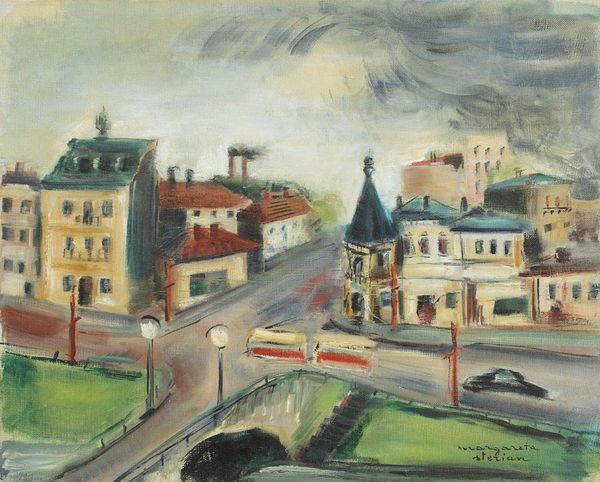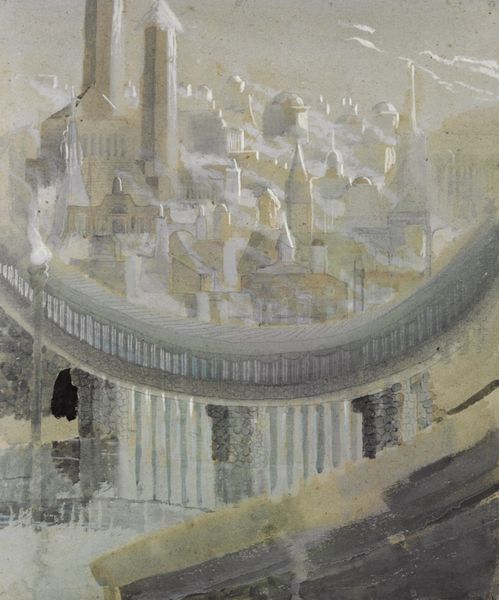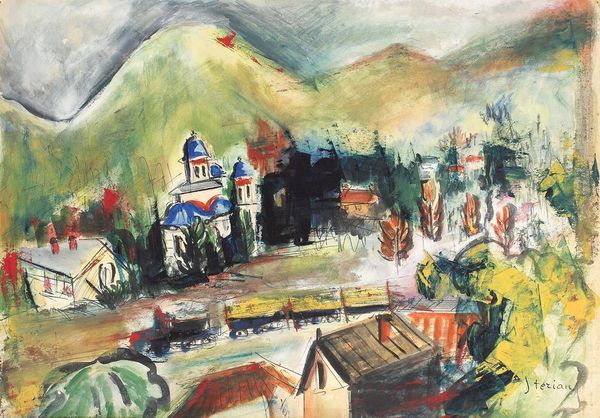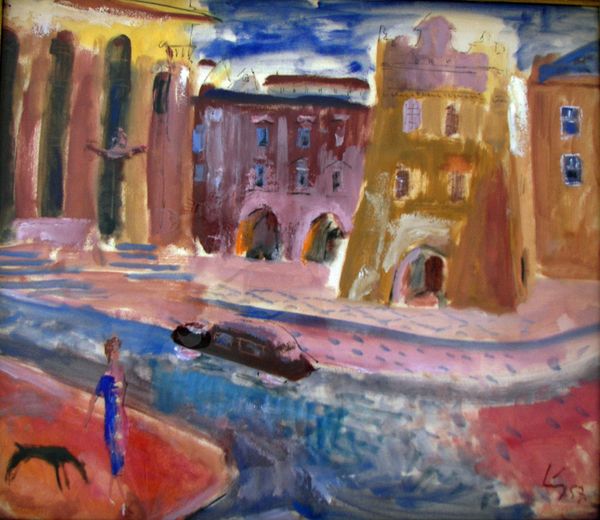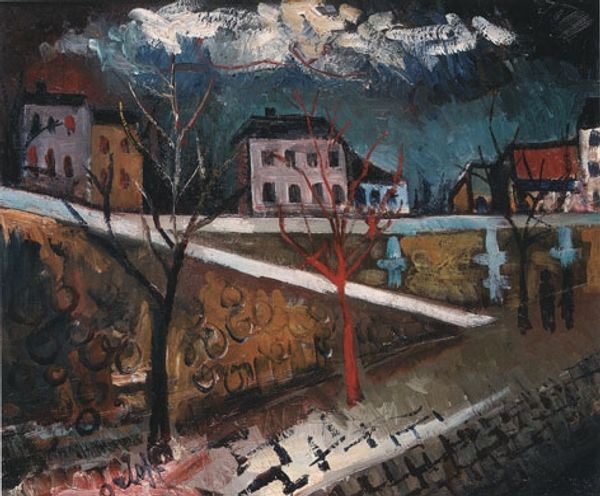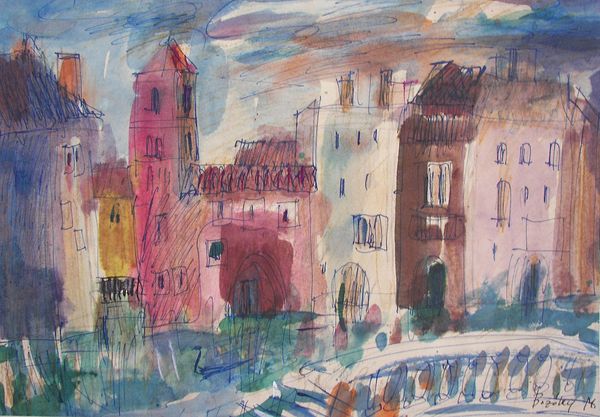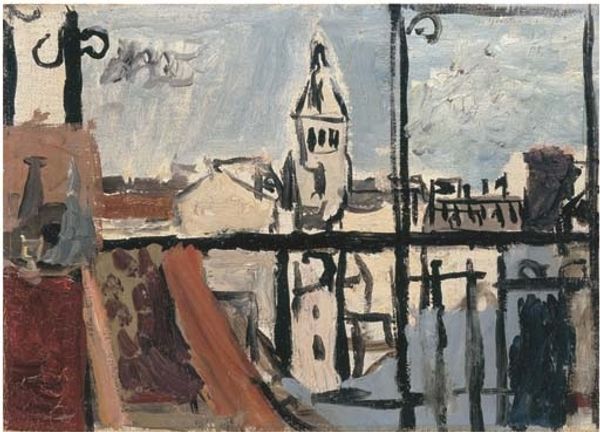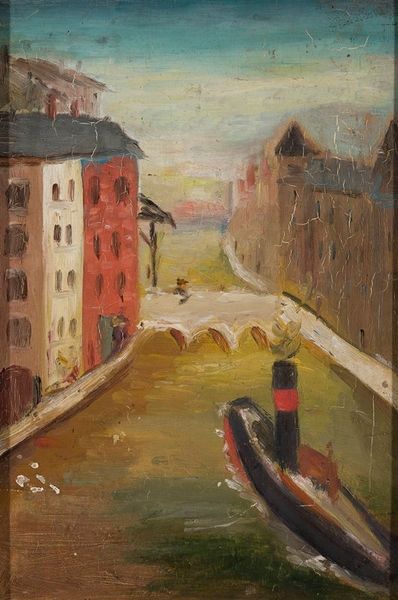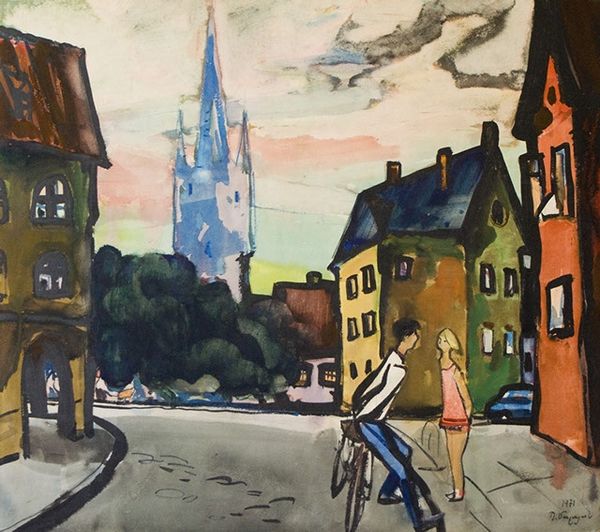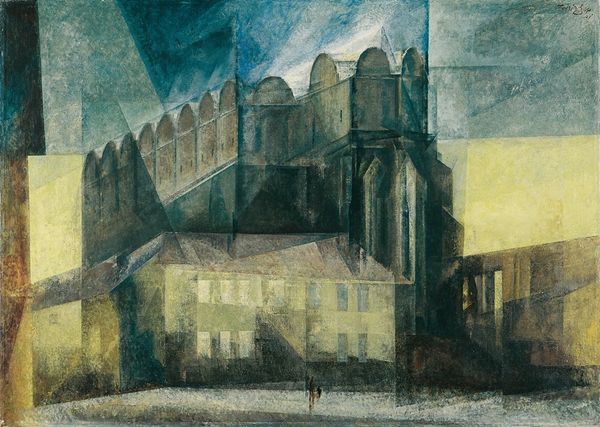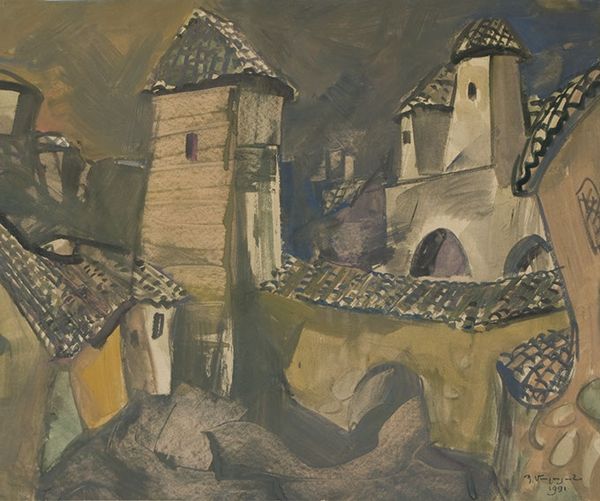
Dimensions: support: 604 x 735 mm
Copyright: © The estate of Julian Trevelyan | CC-BY-NC-ND 4.0 DEED, Photo: Tate
Curator: Welcome. Let's turn our attention to Julian Trevelyan's "The Potteries," an oil on canvas work. Editor: Well, immediately, I'm struck by its melancholy. The muted palette, combined with the looming industrial architecture, creates a rather somber atmosphere. Curator: Notice how Trevelyan uses color and form to create depth. The red buildings in the background recede into the smoky sky, a visual metaphor for industrial expansion. Editor: Precisely. And the figures appear alienated, dwarfed by the scale of the factories. There's a palpable sense of the human cost of industrial progress—a narrative of exploitation. Curator: I agree there’s a narrative. But consider also the formal composition: the balance between the geometric lines of the buildings and the organic shapes of the smoke... Editor: Those forms reinforce the tension between the built environment and nature, a central theme in the history of industrialisation and its discontents, wouldn't you say? Curator: Perhaps. Ultimately, this work reminds us of how intertwined aesthetics and social critique are. Editor: Yes, and how art can bear witness to both progress and its shadow.
Comments
tate 7 months ago
⋮
http://www.tate.org.uk/art/artworks/trevelyan-the-potteries-t07040
Join the conversation
Join millions of artists and users on Artera today and experience the ultimate creative platform.
tate 7 months ago
⋮
Julian Trevelyan created this work as part of Mass Observation’s Worktown project in Bolton in 1938. Artworks inspired by the town were used to gauge local popular reaction to contemporary art. Trevelyan, who identified himself as a surrealist, exhibited this and two other works at the AIA Whitechapel exhibition. Fellow AIA members, William Coldstream and Graham Bell were also part of the Mass Observation Bolton project. Gallery label, September 2024
